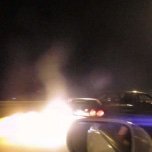Rolling Diameters And Attessa System
Announcements
-
Similar Content
-
Latest Posts
-
By codygrimm27 · Posted
That worked out PERFECTLY! Thank you big time to JJ. He was able to swap me his stock diff. He drove all the way to me as well. Killer! Removal & install was pretty straightforward. The diff itself is HEAVY. So that’s a 2 man job. Man does the car drive nice now! Couldn’t have worked out any better 👌 -
I see what you mean on that last paragraph and makes sense. I am leaning towards because I made the repair/filler area large that I didn't use a long enough block. Will minimise the area and let you's know how I go. This is random but I noticed when I put epoxy primer it felt flat but that's just temporary.
-








Recommended Posts
Create an account or sign in to comment
You need to be a member in order to leave a comment
Create an account
Sign up for a new account in our community. It's easy!
Register a new accountSign in
Already have an account? Sign in here.
Sign In Now